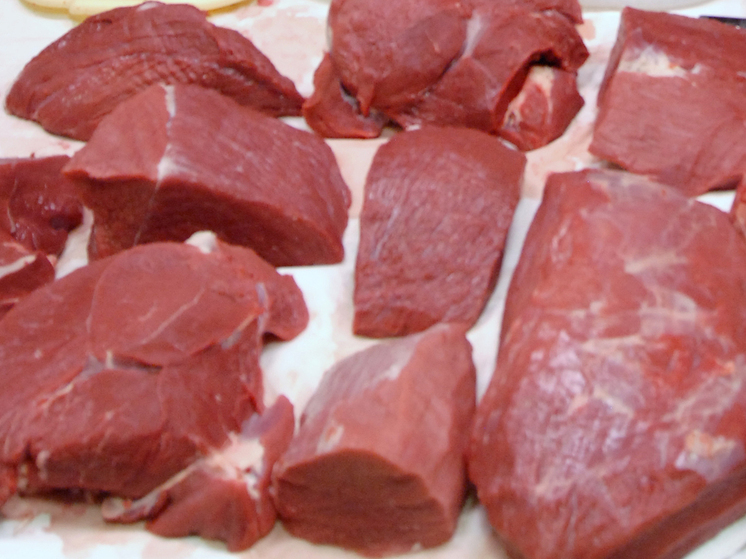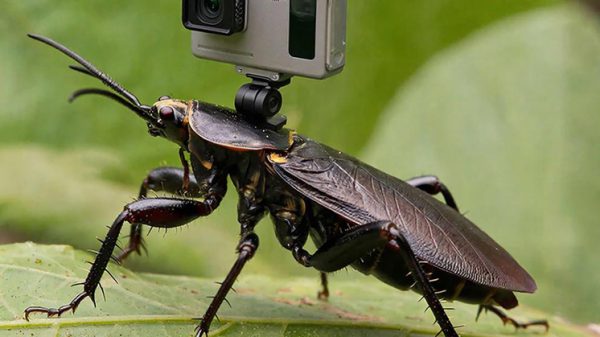It doesn’t look like real beef yet
Have scientists figured out the secret to making lab-grown meat more attractive? New research shows how to make cultured steak and meatballs taste meatier (but they're nothing like the real thing!). It's nothing like real meat, but the lab-grown pieces taste amazing.

Growing meat in laboratory conditions is touted as a way to save millions of animals from slaughter, writes the Daily Mail. But the few who have tried it are often criticized for not having enough real «meat» in it. taste.
Now researchers from Yonsei University in Korea may have a solution. They've developed a lab-grown «beef» that, when heated, takes on a rich, meaty flavor — just like a steak sizzling on the frying pan. While the fancy pink cut of meat doesn't look anything like real beef, their next goal is to imitate the appearance of the real thing. .
«Cultivated,» or laboratory-grown, meat is being developed by scientists around the world as a more ethical alternative to meat from real animals, writes the Daily Mail. This involves taking a sample of a cell from a living animal, which is then grown in the laboratory to produce a pulpy mass using fewer resources and less space.
But there is speculation that this original sample of cells perfectly replicates the taste of real meat grown in a laboratory.
As study author Milae Lee from Yonsei University tells MailOnline, this is not the case.
" Cell culture itself does not allow obtaining a product identical to conventional meat – it's not that simple,” explains Lee. – In this study, we tried to focus on the palatability of cultured meat because we believed that this property is critical to the acceptance of cultured meat as a food product.»
The taste of real meat is largely determined by the Maillard reaction — a chemical reaction between amino acids and sugars in meat, which occurs at a temperature of about 150 ° C, notes the Daily Mail.
But the problem with meat grown in laboratory conditions is the lack amino acids compared to real meat, which means the Maillard reaction is not as strong.
Specifically, the researchers identified a compound called furfuryl mercaptan, which is formed by the Maillard reaction when cooking beef, pork and chicken.
So the team wanted to develop meat that, when cooked, «tastes like beef cooked in a grill.”
In the laboratory they created a “variable flavor composition” (SFC), which retains aroma at normal temperatures, but when heated releases a burst of aroma at 300°F (150°C).
This SFC contains a single flavor molecule that consists of two "linking groups" (the parts of the molecule that bond to each other).
At normal temperatures of 98°F (37°C), the flavor molecule is preserved.
However, when heated to 300°F (150°C) C) during cooking, a flavor compound is released that mimics the Maillard reaction in animal meat.
Scientists say previous studies have used similar methods to produce lab-grown meat that has the same shape as traditional foods such as steak and meatballs, but the actual taste is often overlooked.
“Cultured meat is emerging as a new type of food that can provide animal protein in a sustainable way,” Li and colleagues said in their paper published in the journal Nature Communications. – In this study, a flavor-modifying scaffold was developed that releases meat flavors only at cooking temperature, mimicking the Maillard reaction when cutting meat.»
Although lab-grown meat has not yet reached stores, British scientists are among those who are growing meat products in laboratory conditions with the aim of commercializing them.
Experts from Newcastle are also growing pork fillet in laboratory conditions with a view to commercializing it, although UK permission for growing meat in laboratory conditions has not yet been received, the Daily Mail recalls.
The Australian company Vow created laboratory-grown quail, which was approved for sale in Singapore after a February tasting in Iceland.
And last year, the Ministry The US Department of Agriculture has approved the sale of chicken breasts made from cages by California-based Upside Meats.
Earlier this year, MailOnline journalists tried one of the first lab-grown meat products, pork sausage from the Dutch company Meatable.





















































Свежие комментарии